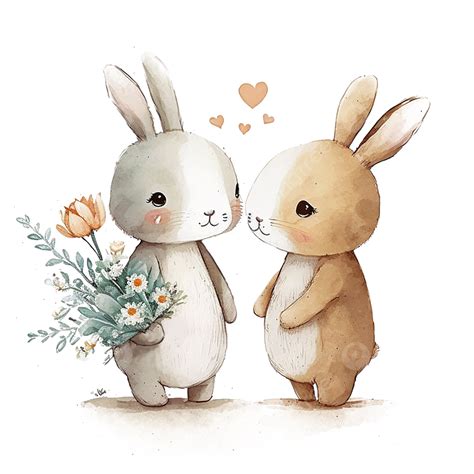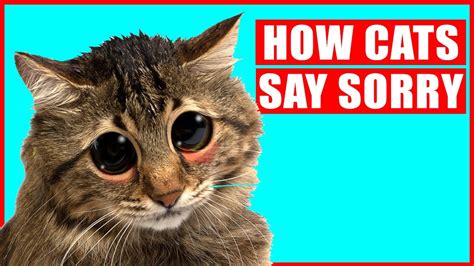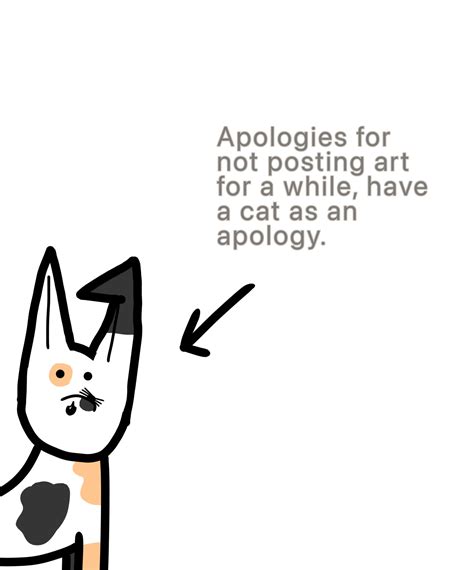
A North Carolina couple’s casual stroll in the woods transformed into an unexpected rescue mission, resulting in the adoption of a domestic rabbit, now affectionately named “Bug,” who has brought immense joy into their lives.
GREENSBORO, N.C. – What began as a leisurely walk in the woods near their home in Greensboro, North Carolina, turned into an unlikely rescue operation for Carrie and Craig Ellison. The couple stumbled upon a small, abandoned domestic rabbit, now named Bug, leading to an unanticipated but welcome addition to their family.
“We were just walking through the woods behind our house, and we saw something moving,” Carrie Ellison recounted. “At first, we thought it was a squirrel or a bird, but then we realized it was a little bunny.”
Upon closer inspection, the Ellisons quickly recognized that the rabbit was not a wild cottontail, common to the area, but rather a domestic breed, ill-equipped to survive on its own in the wilderness. Domestic rabbits lack the natural camouflage and survival instincts necessary to evade predators and forage for food in a natural environment. The couple surmised that the rabbit had likely been abandoned or had escaped from a nearby home.
“He was just sitting there, trembling,” Craig Ellison explained. “He was clearly scared and confused. We knew we couldn’t just leave him there.”
Without hesitation, the Ellisons carefully approached the rabbit, who, surprisingly, did not run away. They gently scooped him up and carried him back to their home.
The Ellisons already had experience with pets, owning a dog and a cat, but they had never cared for a rabbit before. Unsure of how to proceed, they immediately began researching rabbit care online and contacted a local veterinarian for guidance.
“We wanted to make sure we were doing everything right,” Carrie Ellison said. “We learned that rabbits have very specific dietary needs and require a clean, safe environment.”
They discovered that domestic rabbits require a diet primarily consisting of hay, supplemented with fresh vegetables and a limited amount of pellets. They also learned about the importance of providing a spacious enclosure with plenty of enrichment items, such as toys and chewable objects, to keep the rabbit stimulated and prevent boredom.
Following the veterinarian’s advice, the Ellisons set up a temporary enclosure for Bug in their spare room. They provided him with fresh hay, water, and a small bowl of rabbit pellets. They also added a cardboard box for him to hide in, as rabbits naturally seek out enclosed spaces for security.
Over the next few days, the Ellisons closely monitored Bug’s health and behavior. They noticed that he was initially timid and withdrawn, but gradually began to show signs of settling in. He started to explore his enclosure, nibble on his food, and even cautiously approach them when they entered the room.
“It was so rewarding to see him start to relax and trust us,” Craig Ellison said. “We could tell he was starting to feel safe and comfortable.”
As Bug’s health and confidence improved, the Ellisons began to consider the possibility of adopting him permanently. They discussed the responsibilities involved in caring for a rabbit and decided that they were willing to commit to providing him with a loving and supportive home.
“We just fell in love with him,” Carrie Ellison said. “He’s such a sweet and gentle creature. We couldn’t imagine giving him up.”
Before making their decision official, the Ellisons contacted local animal shelters and rescue organizations to see if anyone had reported a missing rabbit. They also posted photos of Bug on social media in an attempt to locate his original owners. However, after several days of searching, they were unable to find any leads.
With no one claiming Bug, the Ellisons decided to formally adopt him. They took him to the veterinarian for a check-up and vaccinations, and officially welcomed him into their family.
Since then, Bug has become an integral part of the Ellison household. He has his own spacious enclosure in the living room, where he spends his days exploring, playing, and interacting with his human companions. He enjoys being petted and cuddled, and often hops over to greet the Ellisons when they come home from work.
“He’s just such a joy to have around,” Carrie Ellison said. “He’s always making us laugh with his funny antics and playful personality.”
Bug has also formed a bond with the Ellisons’ other pets, their dog and cat. While the initial introduction was cautious, the animals have gradually learned to coexist peacefully. They often nap together in the same room, and occasionally even engage in playful interactions.
“It’s been amazing to see them all get along,” Craig Ellison said. “Bug has really brought everyone closer together.”
The Ellisons are now passionate advocates for rabbit adoption and responsible pet ownership. They encourage anyone considering getting a rabbit to do their research and ensure that they are prepared to meet the animal’s specific needs. They also emphasize the importance of adopting rabbits from shelters or rescue organizations, rather than purchasing them from breeders or pet stores.
“There are so many rabbits in shelters that are waiting for loving homes,” Carrie Ellison said. “Adopting a rabbit is a wonderful way to make a difference in an animal’s life.”
The Ellisons’ story is a testament to the unexpected joys that can come from opening one’s heart and home to an animal in need. What began as a simple walk in the woods has transformed into a heartwarming tale of compassion, companionship, and the transformative power of love. Bug, the abandoned bunny, has not only found a forever home, but has also brought immeasurable happiness to the lives of the Ellisons.
The couple has documented Bug’s adventures on social media, sharing photos and videos of him playing, exploring, and interacting with his human and animal companions. They hope that by sharing their story, they can inspire others to consider adopting a rabbit and experience the unique joys of rabbit ownership.
The story of Bug’s rescue and adoption has resonated with animal lovers around the world, highlighting the importance of compassion and responsible pet ownership. The Ellisons’ act of kindness has not only transformed Bug’s life, but has also enriched their own, demonstrating the profound connection that can exist between humans and animals. Their experience serves as a reminder that even the smallest acts of compassion can have a significant impact, bringing joy and fulfillment to both the giver and the receiver. Bug’s journey from abandonment to adoption is a heartwarming example of the transformative power of love and the unexpected blessings that can come from opening our hearts to those in need. The Ellisons’ dedication to providing Bug with a safe, loving, and enriching environment is a shining example of responsible pet ownership and a testament to the enduring bond between humans and animals. The Ellisons plan to continue advocating for rabbit adoption and responsible pet ownership, sharing their experiences and encouraging others to consider opening their homes to these often-misunderstood animals. They believe that rabbits make wonderful companions for the right families, and they are committed to educating others about the joys and responsibilities of rabbit ownership. Bug’s story is a reminder that every animal deserves a chance at a happy and fulfilling life, and that even the smallest creatures can bring immeasurable joy into our lives.
The Ellisons also emphasize the importance of providing rabbits with proper veterinary care. They recommend finding a veterinarian who specializes in rabbit care and scheduling regular check-ups to ensure that the rabbit is healthy and free from any underlying medical conditions. Rabbits are prone to certain health problems, such as dental issues, respiratory infections, and gastrointestinal stasis, so it is important to seek veterinary care at the first sign of illness.
In addition to providing proper medical care, the Ellisons also stress the importance of providing rabbits with a stimulating and enriching environment. Rabbits are intelligent and curious animals that need plenty of opportunities to exercise, play, and explore. They recommend providing rabbits with a spacious enclosure that is filled with toys, chewable objects, and hiding places. They also encourage rabbit owners to spend time interacting with their rabbits, providing them with attention, affection, and opportunities for enrichment.
The Ellisons’ story has inspired many people to consider adopting a rabbit. They have received numerous messages from people who have been touched by their story and who are now considering opening their homes to a rabbit in need. The Ellisons are grateful for the positive response that their story has received, and they hope that it will continue to inspire others to consider rabbit adoption.
The story of Bug and the Ellisons is a reminder that even the smallest acts of kindness can have a significant impact on the lives of animals. By opening their hearts and home to an abandoned rabbit, the Ellisons have not only transformed Bug’s life, but have also enriched their own. Their story is a testament to the enduring bond between humans and animals and the transformative power of love. The Ellisons are now committed to advocating for rabbit adoption and responsible pet ownership, sharing their experiences and encouraging others to consider opening their homes to these often-misunderstood animals.
The Ellisons’ dedication to providing Bug with the best possible life is a shining example of responsible pet ownership. They have gone above and beyond to meet his needs and ensure his well-being. Their story is a reminder that pets are not disposable commodities, but rather living beings that deserve our love, care, and respect. The Ellisons’ commitment to Bug is a testament to the enduring bond between humans and animals and the profound impact that pets can have on our lives.
Through their experience with Bug, the Ellisons have gained a newfound appreciation for the unique qualities of rabbits as companion animals. They have learned that rabbits are intelligent, curious, and affectionate creatures that can bring immeasurable joy to the lives of their owners. They hope that by sharing their story, they can help to dispel some of the common misconceptions about rabbits and encourage more people to consider adopting them as pets.
The Ellisons’ story is a reminder that every animal deserves a chance at a happy and fulfilling life, regardless of their species or breed. By opening their hearts and home to Bug, they have not only transformed his life, but have also enriched their own. Their story is a testament to the enduring bond between humans and animals and the transformative power of love. The Ellisons are now committed to advocating for rabbit adoption and responsible pet ownership, sharing their experiences and encouraging others to consider opening their homes to these often-misunderstood animals. Bug’s legacy will live on through the Ellisons’ advocacy and the countless lives that they will inspire to consider rabbit adoption. Their story is a beacon of hope for all animals in need, reminding us that even the smallest acts of kindness can make a world of difference. The Ellisons’ compassion and dedication are an inspiration to us all.
Frequently Asked Questions (FAQs)
-
How did the Ellisons find Bug the rabbit?
The Ellisons found Bug while taking a walk in the woods near their home in Greensboro, North Carolina. They noticed a small animal moving and discovered it was a domestic rabbit, not a wild cottontail. According to Carrie Ellison, “We were just walking through the woods behind our house, and we saw something moving. At first, we thought it was a squirrel or a bird, but then we realized it was a little bunny.” They recognized that the rabbit was a domestic breed ill-equipped to survive in the wild.
-
What made the Ellisons realize that Bug was not a wild rabbit?
The Ellisons recognized that Bug was not a wild rabbit because he was a domestic breed. Domestic rabbits lack the natural camouflage and survival instincts necessary to evade predators and forage for food in a natural environment. They also noticed that Bug appeared scared and confused, which further indicated that he was not accustomed to living in the wild. Craig Ellison said, “He was just sitting there, trembling. He was clearly scared and confused. We knew we couldn’t just leave him there.”
-
What steps did the Ellisons take to care for Bug after finding him?
After rescuing Bug, the Ellisons immediately began researching rabbit care online and contacted a local veterinarian for guidance. They set up a temporary enclosure for Bug in their spare room and provided him with fresh hay, water, and rabbit pellets. They also monitored his health and behavior closely. Carrie Ellison stated, “We wanted to make sure we were doing everything right. We learned that rabbits have very specific dietary needs and require a clean, safe environment.”
-
How did the Ellisons ensure they were not taking someone else’s pet?
Before deciding to adopt Bug permanently, the Ellisons contacted local animal shelters and rescue organizations to see if anyone had reported a missing rabbit. They also posted photos of Bug on social media in an attempt to locate his original owners. After several days of searching and receiving no leads, they proceeded with the adoption.
-
What advice do the Ellisons have for people considering adopting a rabbit?
The Ellisons are passionate advocates for rabbit adoption and responsible pet ownership. They encourage anyone considering getting a rabbit to do their research and ensure they are prepared to meet the animal’s specific needs. They also emphasize the importance of adopting rabbits from shelters or rescue organizations rather than purchasing them from breeders or pet stores. Carrie Ellison said, “There are so many rabbits in shelters that are waiting for loving homes. Adopting a rabbit is a wonderful way to make a difference in an animal’s life.”
-
What dietary needs do rabbits have?
Rabbits require a diet primarily consisting of hay, supplemented with fresh vegetables and a limited amount of pellets. Hay is crucial for their digestive health, providing necessary fiber. Fresh vegetables offer essential vitamins and minerals. Pellets should be given in moderation to prevent obesity and other health issues. Water must be available at all times.
-
Why is a spacious enclosure important for rabbits?
A spacious enclosure is important for rabbits because they are active animals that need room to move around, explore, and exercise. A confined space can lead to boredom, stress, and health problems. The enclosure should be large enough for the rabbit to hop, stretch, stand on its hind legs, and have separate areas for eating, sleeping, and using the litter box.
-
What are some enrichment items that can be provided for rabbits?
Enrichment items for rabbits include toys, chewable objects, and hiding places. Toys such as balls, tunnels, and cardboard boxes can provide mental stimulation and encourage physical activity. Chewable objects, such as wooden blocks and branches, help to keep their teeth healthy. Hiding places, such as cardboard boxes or tunnels, provide a sense of security and allow the rabbit to escape from stressful situations.
-
How did Bug get along with the Ellisons’ other pets?
Bug formed a bond with the Ellisons’ other pets, their dog and cat. Initially, the introduction was cautious, but the animals gradually learned to coexist peacefully. They often nap together in the same room and occasionally engage in playful interactions. Craig Ellison noted, “It’s been amazing to see them all get along. Bug has really brought everyone closer together.”
-
What are some common health problems that rabbits are prone to?
Rabbits are prone to several health problems, including dental issues, respiratory infections, and gastrointestinal stasis. Dental problems are common due to their constantly growing teeth. Respiratory infections can be caused by bacteria or viruses. Gastrointestinal stasis is a serious condition in which the digestive system slows down or stops completely. Regular veterinary check-ups are essential for detecting and treating these health problems early.
-
What is the importance of finding a veterinarian who specializes in rabbit care?
Finding a veterinarian who specializes in rabbit care is crucial because rabbits have unique medical needs that differ from those of dogs and cats. A rabbit-savvy veterinarian will have the knowledge and experience to properly diagnose and treat rabbit-specific health problems. They will also be able to provide guidance on proper diet, husbandry, and preventive care.
-
What are some signs of illness in rabbits?
Signs of illness in rabbits can include loss of appetite, lethargy, changes in stool production, nasal discharge, sneezing, coughing, head tilt, and difficulty breathing. It is important to seek veterinary care immediately if you notice any of these signs in your rabbit. Early detection and treatment can significantly improve the chances of a successful outcome.
-
How can rabbit owners provide a stimulating and enriching environment for their pets?
Rabbit owners can provide a stimulating and enriching environment for their pets by offering a spacious enclosure filled with toys, chewable objects, and hiding places. They should also spend time interacting with their rabbits, providing them with attention, affection, and opportunities for enrichment. This can include petting, grooming, playing games, and providing opportunities for exploration.
-
What are some common misconceptions about rabbits as pets?
Some common misconceptions about rabbits as pets include the belief that they are low-maintenance, that they can live in small cages, and that they are not affectionate. In reality, rabbits require a significant amount of care, including proper housing, diet, and veterinary care. They also need plenty of attention and interaction to thrive. Rabbits can be very affectionate and can form strong bonds with their owners.
-
Why is it important to adopt rabbits from shelters or rescue organizations?
It is important to adopt rabbits from shelters or rescue organizations because there are many rabbits in need of loving homes. Shelters and rescue organizations often have a variety of rabbits available for adoption, including rabbits of different breeds, ages, and personalities. Adopting a rabbit from a shelter or rescue organization can save a life and provide a deserving animal with a second chance.
-
How has Bug changed the Ellisons’ lives?
Bug has brought immense joy and happiness into the Ellisons’ lives. He has become an integral part of their family and has enriched their lives in countless ways. Carrie Ellison said, “He’s just such a joy to have around. He’s always making us laugh with his funny antics and playful personality.” Bug has also brought the Ellisons’ other pets closer together and has inspired them to advocate for rabbit adoption and responsible pet ownership.
-
What is the Ellisons’ goal in sharing their story?
The Ellisons’ goal in sharing their story is to inspire others to consider adopting a rabbit and to educate people about the joys and responsibilities of rabbit ownership. They hope that by sharing their experiences, they can help to dispel some of the common misconceptions about rabbits and encourage more people to open their homes to these often-misunderstood animals.
-
What is the significance of Bug’s name? While the article doesn’t explicitly state the reason for Bug’s name, it can be inferred that it’s a common and affectionate nickname for a small, adorable creature. It’s a term of endearment that reflects the Ellisons’ fondness for their rescued rabbit.
-
What are the long-term implications of domestic animals being abandoned in the wild?
The abandonment of domestic animals in the wild can have serious ecological consequences. Domestic animals lack the skills to survive and often starve or fall prey to predators. They can also disrupt local ecosystems by competing with native species for resources, spreading diseases, and interbreeding with wild populations, which can dilute the genetic diversity of wild species. Furthermore, the abandonment of animals is inhumane and can cause significant suffering.
- Beyond adoption, what other ways can people support animal welfare organizations?
Besides adopting animals, people can support animal welfare organizations through various means. Volunteering time to care for animals, providing administrative assistance, or helping with fundraising events is a valuable contribution. Donations, whether monetary or in the form of needed supplies like food, blankets, and toys, are always appreciated. Fostering animals temporarily provides them with a home environment while they await permanent placement, freeing up shelter space. Advocacy for animal-friendly legislation and promoting responsible pet ownership are also crucial ways to support animal welfare.
- What resources are available for those considering rabbit ownership to learn about their specific needs?
Many resources are available for those considering rabbit ownership. Reputable rabbit rescue organizations and shelters offer detailed information on rabbit care, behavior, and health. Veterinarians specializing in rabbit care can provide expert advice and guidance. Online resources like the House Rabbit Society website offer comprehensive information on all aspects of rabbit ownership. Books and magazines dedicated to rabbit care are also valuable resources. Additionally, connecting with experienced rabbit owners through online forums or local rabbit clubs can provide valuable insights and support.
- How can communities work together to prevent pet abandonment?
Communities can work together to prevent pet abandonment through education, accessible resources, and supportive policies. Public awareness campaigns can educate pet owners about the responsibilities of pet ownership and the consequences of abandonment. Providing affordable spay and neuter services can help control pet populations and reduce the number of unwanted animals. Offering temporary assistance to pet owners facing financial difficulties or housing insecurity can prevent them from having to surrender their pets. Strong enforcement of animal abandonment laws and collaboration between animal shelters, rescue organizations, and local government agencies can also help to address the problem effectively.
- Can rabbits be litter-box trained, and what is involved? Yes, rabbits can be litter-box trained, making them cleaner and easier to care for indoors. The process involves placing a litter box filled with appropriate litter (such as paper-based or wood-based litter) in a corner of their enclosure or a designated area. Rabbits naturally tend to eliminate in one spot, so if you notice them frequently using a particular area, place the litter box there. To encourage use, place some of their droppings and urine-soaked bedding in the litter box. Reward them with a treat when they use the litter box. Consistency and patience are key, and it may take some time for the rabbit to fully learn to use the litter box.









